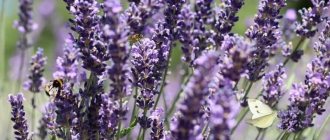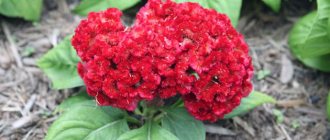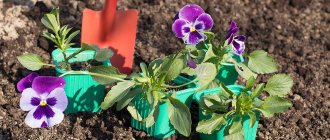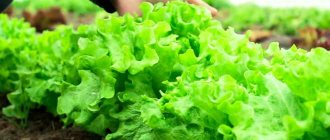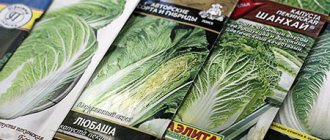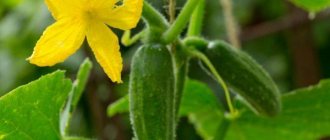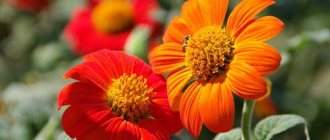Tobacco is considered a heat-loving crop, but there are varieties intended for cultivation in temperate climates. By following the tips below, you can easily grow your own tobacco.
We will tell you how to properly prepare the site and seeds for planting, care for grown plants and harvest. Our tips will make growing tobacco simple, easy and enjoyable.
Benefits of growing
You don't have to be a heavy smoker to grow plants. Although the crop has no decorative value, it has a special meaning for the farmer - tobacco dust protects against pests and fungal diseases. And the snuff was used to cleanse the pulmonary system.
For smokers, growing helps reduce costs + increase capital by several thousand. Simple calculations will help prove this:
- cigarettes contain 1-2 g of tobacco;
- in a pack 20-40 g;
- for a year you will need up to 8-9 kg of smoking mixture;
- per 1 sq.m. Up to 8 bushes are planted, each of them produces at least 25 g.
From here we carry out calculations: for 50 sq. m. up to 350 bushes will be planted. This is enough for a year. But if the quality of the tobacco is high, you will need to add stems.
This further increases the number of cigarettes. To sell, it is enough to sow a hundred square meters in order to:
- return the funds spent on the purchase of seeds;
- do not waste money on low-quality cigarettes;
- earn additional funds;
- to prepare planting material for next year.
After summing up the results, gardeners make a decision: is it worth it to grow in the garden plot.
Need to know! Tobacco is valued for providing short-term euphoria. This happens due to the content of nicotine or neurotoxin. The substance is found in all parts of the plant, but is most concentrated in the leaves. Higher varieties contain up to 3% nicotine.
What is shag?
An annual herbaceous plant, also famous as country tobacco. Rustic, because is considered its lowest grade. Makhorka received this name from the city in which the tobacco industry was actively developing. However, due to its external resemblance to tobacco itself, it is considered one of its varieties.
But that's not true. Common tobacco is a whimsical plant, like shag, which can grow anywhere.
Common shag
There are two types of shag - smoking and snuffing. The first - the composition included leaves and a small proportion of the stem of the plant. The second one consisted not only of ground leaves, but also of mint oil, glycerin, salt, etc.
Nicotine is found in all parts of the plant, not just the leaves. However, they are used for smoking after fermentation and drying. Now the use of shag for smoking has practically disappeared. To save on raw materials, unscrupulous manufacturers used not only the leaves, but also the stems of the plant.
Gradually, only they remained in the composition, which affected the taste of the products, as well as the smell (it became very pungent). That is why shag was replaced with tobacco. Now shag is grown only in small quantities on some farms. It is supplied to the market in very small quantities as exotic.
Choosing the right variety
Home tobacco growing is actively developing. In the last decade, farmers have been trying to obtain a quality product for their own needs and trade.
But the desire to be a successful entrepreneur or owner of homemade tobacco products is just the beginning. You should choose a tobacco variety that is truly suitable for a novice breeder/gardener.
For post-Soviet countries, it is recommended to choose from varieties that were obtained during breeding work in the USSR or Russia. This tobacco is already acclimatized:
- Herzegovina Flor and Krepysh;
- Yubileiny New 142 and Virginia 202;
- Russian and Stalingrad.
It is advisable to carry out the first planting in a combination of several types of crops. This way you can see the differences and choose according to your preferences.
Dwarf
Types of dwarf tobacco are hybrids. Thanks to such varieties, it is possible to obtain beautiful plants not in the open ground, but in pots at home. These species grow in sun, shade and partial shade. The only negative: annual seeds do not retain varietal characteristics.
Suitable for planting:
- Perfume F1;
- Saratov F1;
- Nikki and Avalon.
Medium height
Low-growing varieties of tobacco grow to a maximum height of 20-30 cm. Medium-growing varieties are taller - up to 50 cm. With their help, they form hedges and decorate the area around the house.
The flowers are multi-colored, so they look great in flower beds, along walls and in pots.
The fourth stage - harvesting
The collection is carried out in early autumn at the stage of yellowing of the foliage. Carefully discard collected material. Damaged or wet leaves are absolutely not suitable for drying!
- The picked leaves are folded for 12 hours to dry in a well-ventilated and shaded room in dense layers of 20-30 cm.
- The leaves prepared in this way are strung on a nylon cord and hung until completely dry.
- To speed up the process, you can use an oven or microwave.
The tobacco is ready for use as soon as the leaf becomes dry and brittle enough to be crushed.
What you need to know about seed material
Each variety of tobacco grows and develops in a special way. Before purchasing, you should study the nuances, subtleties of germination, maintenance and care. Only after you are convinced of the simplicity and unpretentious care of the chosen species, start germinating seedlings.
If a variety loves a lot of light and heat, but the climate does not provide such an opportunity, then there is a way out: build a greenhouse and add heating. Optimally comfortable conditions for tobacco are only in the south.
Another feature that must be taken into account when growing at home is that the plant loves moisture. The soil type is preferable to chernozem, sandy loam or loamy soil.
These types of soil contain a sufficient amount of useful elements:
- nitrogen;
- potassium;
- calcium.
The specifics of germination of seedlings and plant care are similar to the technology of agrotechnical work with tomatoes.
Choosing a tobacco variety
Scientists of the All-Russian Institute of Tobacco have selected 186 varieties of tobacco products intended for growing smoking tobacco in the difficult climatic conditions of our country. For example, Ostrolist (Soviet large-leaved variety) is a leader in tobacco crop production. For many years it was the main source of raw materials for cigarettes produced by Soviet factories. Currently, there are more than 30 modifications of this unpretentious and high-yielding plant.
Holly 316
Refers to mid-late ripening varieties with a ripening period of 110 days. Narrow elliptical sheet. The average size of a leaf plate is 45 x 25 cm. One bush produces up to 40 leaves suitable for fermentation.
Samsun 155
An early ripening variety with a ripening period of 91 days. Rarely reaches 1 meter in height. At the same time, Samsun 155 produces a record amount of technical sheets - 50 units from one bush. The area of the leaf blade with good care reaches 530 square meters. cm.
Trapezond 15
Another popular domestic tobacco variety. The demand is easily explained by the fast ripening time (90 days from planting to harvesting) and taste.
Datura 904
The official name of Village shag is the most common variety among amateur tobacco growers. The unpretentious plant easily tolerates temperature fluctuations, is resistant to tobacco diseases, and produces a high yield. The 100% germination of seeds is especially noted.
Armenia
The second most popular variety of shag. By the way, the unofficial name is Makhorka No. 2. A distinctive feature is high yield and resistance to diseases. Just like Datura 904, the growing season is no more than 80 days.
Specifics of growing smoking tobacco seedlings
Sowing seeds in open ground is not advisable. After transplantation, it gets along with all types of tobacco crops, including shag. It is better not to combine with garden flowers, as a number of varieties have a pungent, strong odor.
The seed material is subjected to special treatment. Stratification and soaking in tartaric acid is necessary. The temperature of the liquid should not exceed 27 degrees.
Soaking lasts a day. The temperature of the liquid is maintained. This will help the crops hatch faster. For 1 g of tobacco seeds you will need 3 ml of acid.
Preparing the soil and drainage substrate
Culture grows quite hard. Hence, it is important to choose the right soil: loose, nutritious. The most suitable option is purchased soil mixture.
There is a second option: cook it yourself (contraindicated for beginners). You will need:
- soil from the permanent habitat of tobacco (pre-roasted in the oven);
- river sand (baking powder must be fine, always fried);
- compost or humus.
Drying tobacco leaves
Hang your tobacco leaves in a well-ventilated, warm area with low humidity.
It is important that the temperature when drying the sheet should not fluctuate, drop below +18 degrees and exceed +28. This can cause uneven drying and spoil the quality of the product.
- In order for tobacco leaves to acquire a bronze color, they must be dried, this operation is called fixing. It is necessary to choose a room with a low humidity threshold and good ventilation. It is imperative to have space between the leaves for better air circulation.
- The proper drying process for tobacco leaves takes several weeks to achieve a good quality finished product. Tobacco that dries out too quickly will be green and will likely not produce a good aroma or taste. Leaves that dry out too slowly may become susceptible to mold and rot, which will ruin the tobacco. Be sure to keep an eye on your tobacco leaves. And temperature and humidity parameters.
- If you dry the leaves with the stem, which is also possible for some varieties, then as the leaves dry, the stems must be removed.
- Choose a room for drying tobacco that is clean, dark, well ventilated, try not to unnecessarily disturb the microclimate in the room where tobacco is dried. This can harm the drying process and spoil the aroma of the tobacco leaves.
- Drying tobacco in air is mainly used for its further use in the manufacture of cigars. Tobacco can also be dried using flue drying. Smoke curing takes about 10 weeks and is used to prepare chewing tobacco. Drying tobacco leaves in the sun can be used for making cigarettes.
We create optimal conditions during the seedling period
At home, it will be easier to get a high yield if you follow agrotechnical cultivation standards. To do this, you need to study the intricacies of care and create comfortable conditions for tobacco (climatic features of South America).
Choosing the right temperature, humidity, lighting means helping the plant develop. For the farmer - to get an excellent harvest.
Temperature, lighting and humidity
Tobacco seeds are mixed with sand before planting. The rake for the grains is made small to lightly sprinkle the material. Based on sowing technology, tobacco seeds are not sent to a shaded place.
They are left under film or glass in a well-lit place. The room temperature should not be less than 25-27 degrees.
To obtain seedlings and rapid growth/hatching, lighting is maintained artificially for 16 hours.
Watering and fertilizing
The main condition for care is regular moisturizing. Watering is carried out by drip. Before the first green peaks appear, the soil is moistened with a spray bottle. Then they just move on to watering.
As soon as the first three leaves appear, the covering material is removed and a pick is made. The procedure involves a method of transshipment.
Separate containers are installed in a well-lit place at a temperature of 16-18 degrees. The need for watering is checked by checking the soil. Overwatering leads to the appearance of fungal diseases.
It is important for tobacco to have nutritious soil. Therefore, you cannot do without fertilizer mixtures. The soil for picking is treated/mixed with chicken manure, superphosphate, potassium salt or nitrate.
But one of the additives is used if the soil mixture is purchased. Homemade potting soil already contains the required ingredient – humus.
Important! Before transplanting into open ground, tobacco is hardened off. At the time of planting, the plant must be in the fresh air for at least 1 hour. Watering is completely stopped three days before the event. A week before planting, water a maximum of 1-2 times.
When to plant tobacco and shag seedlings?
To grow from a seed to a plant ready for transplanting into open ground, tobacco may take an average of 1.5-2 months. Therefore, before sowing, you should focus on the weather conditions of the region. So in the south of the country you can start from the end of February, in the north - from the beginning of April, in the middle zone - from the second half of March.
You can also refer to the Lunar calendar for 2021. Favorable time:
- February 1-8, 10-20, 25-29;
- March 2-8, 10-14, 29-31;
- 1-2, 5-7, 9, 18-20, 24-25 March.
Unfavorable time:
- 9, 21, 22, 23 February;
- 9, 19-21, 24 March;
- 8, 15-17, 23 April.
So, the optimal time for planting tobacco seedlings is from late February to early April.
The ripening time for shag is shorter, so it can be planted later. It is believed that from the beginning of April to the beginning of May is the best time
Planting tobacco seedlings in open ground
It is important to plant seedlings in the initial stages of growth. If the sowing procedure was carried out correctly, the first leaves will appear in 1-2 weeks.
For picking to benefit, you cannot miss the moment - the formation of 2-3 leaves will be a signal. Consider the following:
- Choose a container for tobacco that is convenient. Disposable glasses work well. The width and height of the container meet the requirements;
- you will need to use the transshipment method. The cups are simply cut, and a lump of earth is carefully inserted into the prepared hole;
- the soil is fed a week before planting tobacco in a permanent place. A young plant will need a lot of nutrients for growth, rooting, and development.
But that's not all there is to remember. It is important for tobacco to have a good neighbor. And also the territory of “moving in” should be comfortable.
Selecting a site and neighboring crops
The best place for tobacco is on a slope. This provides an advantage for active growth: excess liquid drains, there is no stagnation during frequent rainfalls. If you plant tobacco in a greenhouse, then drainage layers are made, drains for excess after watering.
Features of care
You need to water your young plants daily, but do not allow the water to stagnate.
After the tobacco grows, watering can be reduced and water the plants three times a week to avoid excessive saturation of soil moisture.
- Do not allow excessive dampness in your beds, this will lead to rotting of the roots and deterioration in the quality of tobacco leaves. If your area is prone to drought, install an irrigation system. But achieve optimal hydration. This will prevent the soil from drying out and protect the plants from death.
- When it rains, tobacco leaves collect moisture like a funnel, so watering at this time is not necessary.
Use a low-chlorine fertilizer for tobacco that contains only nitrogen in the nitrate form.
Fertilizers used for tomatoes, peppers, and potatoes are also suitable.
- Excessive feeding of plants will be a serious problem in the future, as it can lead to damage to the roots. The choice of fertilizers, their quantity and purpose, will depend on the quality of your soil, location of the site and climatic conditions.
- It is recommended to apply fertilizers and fertilize several times. Before planting tobacco and during flowering of the plant. Once the tobacco blossoms are removed, no feeding is required.
It is necessary to break off the tobacco inflorescences immediately during flowering.
This operation allows you to obtain thicker stems and leaves of the plant, and, accordingly, higher quality products in the future.
- Removing inflorescences is not difficult, just tear off the bloom or cut it with scissors.
- Soon after the tops are removed, the newly formed axillary buds must also be removed on each leaf. Remove them manually, otherwise they will reduce the yield and quality of the tobacco output.
Monitor and care for plants, treat the soil against weeds.
It is necessary to carry out inter-bed loosening for better soil aeration and penetration of moisture to the roots, as well as hilling the plants to strengthen the tobacco root system.
- Tobacco roots develop quickly and the root structure is quite extensive, with small, hair-like accessory roots that grow close to the soil surface. Be careful when weeding or hoeing, as going too deep into the soil can damage the plant's roots.
- 3 - 4 weeks after planting tobacco, it is best to minimize the technical impact on the seedlings and fight weeds only by hand.
Purchase special pesticides, in the form of sprays, to combat pests and diseases of tobacco.
Common pests of tobacco are tobacco aphids, field slugs, tobacco thrips and pathogens.
- Tobacco is susceptible to many different diseases. Preventive measures can help fight the disease, but there is no guarantee that they will be effective in any given situation.
- To combat pathogenic fungi, such as rot and mold, there are a number of specialized products that are applied to the young plant, protecting it from disease attacks. Keep in mind that some pesticides are specifically designed to kill insects, while others simply kill fungus, so make sure to choose the one that best suits your situation.
Further care of the plant
Tobacco is easy to care for. It will be easy to get excellent yield results if you follow simple rules:
- water as needed and do not over-water;
- remove weeds in a timely manner;
- regularly loosen and feed the plant.
Feeding and watering
During the growing season, no more than 3-4 waterings will be required. Water consumption = 5-8 liters per bush. Weather conditions and the presence of rainy days are taken into account.
The application of fertilizing corresponds to the growing season. The balance of nitrogen, potassium and phosphorus is the key to success. The first procedure is recommended using manure and superphosphate.
Next, you can use traditional methods: yeast, infusion of onion peels.
Trimming
The event is necessary only at the initial stage. It is replaced by topping.
Protection and treatment from diseases and pests
Tobacco bushes are excellent pest repellers. But the plant also requires certain actions on the part of the gardener - protection from fungal infections and insects:
- when peach aphids and tobacco thrips appear, it is necessary to treat them with metathione or rogar;
- root rot. Treatment with benlate is necessary;
- a 0.3% suspension of zineb (80%) will help against blackleg;
- powdery mildew is removed with a suspension of 1% colloidal sulfur;
- mosaic disease is protected by polycarbacin 80%, and Bordeaux mixture protects against bacterial grouse.
How to grow tobacco: recommendations from an experienced gardener
Every seventh person is a smoker and sponsor of tobacco companies. Did you know that modern cigarettes contain virtually no tobacco? A cheap cigarette is a kind of wick made from tobacco production waste, impregnated with toxic chemical compounds.
If you just can't quit smoking, try growing varietal tobacco yourself. Experienced tobacco growers even create small tobacco plantations on their own plots. However, this is a rather labor-intensive process that requires special knowledge. The secrets of growing tobacco and caring for it are shared with us by Dmitry Sergievsky , who has extensive experience in successfully growing this crop in the Perm region.
Dmitry, what types of tobacco do you grow? Which ones are especially popular?
There are 5 main groups into which all varieties of tobacco can be divided:
- Skeletal varieties (the basis of all mixtures). For example, Burley and Virginia.
- Skeletal-aromatic (used both separately and in mixtures).
- Oriental varieties. They have a strong aroma.
- Cigars. Used to make cigars. They have increased strength.
- A separate subspecies are shag varieties, the so-called “samosad”, although some of them have the characteristics of tobacco.
I grow 2-3 varieties from each group, except shag. I will list the main ones that are most popular: Virginia Gold, Virginia Red, Bravy-200, Spectrum, Dyubek, Orenthal, Vostochny, Havana, Silver River and Maryland...
Tobacco, as far as I know, is grown through seedlings. How to prepare the soil for this crop and what containers are best to sow in?
As soil for tobacco seedlings, I use a purchased peat mixture with the addition of wood ash and sand (preferably river sand). I sow tobacco in small plastic containers with lids. I make holes at the bottom and cover them with agrospan so that the soil does not spill out.
During the first weeks of development, tobacco seedlings often die from root rot and blackleg. If growing conditions are not met, losses can reach up to 100%. Therefore, before sowing tobacco, I recommend watering the soil with a solution of Fitosporin.
How to determine the optimal time for sowing seeds (for example, for central Russia)?
Tobacco is sown on average 40-60 days before transplanting into the ground, and this period is different in each region. In the Urals, mature tobacco seedlings can be planted in open ground on June 10-15. That's why I start sowing tobacco in mid-April. In regions with warmer climates, you can sow as early as early March.
Are tobacco seeds sown dry? Do they need to be disinfected before sowing?
I recommend keeping tobacco seeds in a weak solution of manganese for about 6 hours. Those that float should be thrown away, and the remaining ones should be filtered and dried for ease of sowing.
Since the seeds are very small, it is very difficult to place them one by one on the surface of the soil. I sow the seeds simply with my fingers: I pick up a pinch and sprinkle it like salting a dish.
There is a wonderful way to sow small seeds: lay a layer of snow on the ground, compact it, and sow the seeds on top. This way you can easily see how many seeds you are pouring. The snow gradually melts, and the seeds fall onto well-moistened prepared soil.
Do the seeds need to be covered with soil? What conditions need to be created for germination?
You can cover it with a small layer of soil, but it is not necessary. I cover it with a layer of 5-7 mm, which increases the germination period by a week. At the same time, the root system of the seedlings develops well. And seeds that are not covered with soil can “float away” when watered at the cotyledon leaf stage.
Since I use containers with a lid for sowing, before germination I have the opportunity to make mini-greenhouses. I place the containers in a warm place where the temperature is not lower than 20-25°C. It is advisable to open for ventilation for half an hour twice a day.
Dmitry, please tell us how to care for seedlings? Is additional lighting required? How should you water?
It is advisable to feed seedlings only with root formation stimulants. With sufficient lighting, growth occurs uniformly. If there is not enough light, additional lighting with a full spectrum of light is used, best of all - phytolamps. It is advisable for plants to rest at night from light to get used to the change from day to night in soil conditions. Before picking, tobacco seedlings are watered only through a tray.
After the tobacco sprouts appear, do you thin out, leaving the strongest plants?
I do not thin out seedlings, although some tobacco growers practice this. In one tray measuring 20x20 cm I can fit 200-250 plants.
How do you pick seedlings?
Picking seedlings is the most interesting and time-consuming process. One plant requires 100-150 ml of soil. We make holes in the cups, fill them with soil and moisten them. We dip the plant to be planted in water to free the roots from the soil. Then we plant the seedling in the prepared container. At this stage, losses can range from 10 to 30%, it all depends on the experience of picking plants.
I recommend diving in stages, because... Before the tobacco “moves” into the greenhouse, the plants need to be hardened off and accustomed to the sun. To do this, we take the seedlings outside for 1-2 weeks and expose them to the sun, ranging from 15 minutes to 1.5 hours a day. Our greenhouse is not heated. We use only heat accumulators in the form of metal barrels filled with water. They heat up during the day and give off heat at night.
How to determine the optimal time for planting seedlings in open ground? And at what distance from each other should the bushes be located?
By the time the tobacco bushes are planted, the soil should warm up to 10°C. Tobacco is a very heat-loving plant, and when the temperature drops sharply, its growth and development slow down greatly, and minor frosts can cause death. Therefore, the bushes are planted in a permanent place after waiting for stable heat.
The distance between the rows is 50-60 cm, between plants - 30-40 cm. With proper hardening, there is no need to shade the tobacco. There are varieties that require shading, but these are luxury cigar varieties. They don't grow up like that in Russia. You can cover the plantings with spunbond, like tomatoes, but with a large volume (and I have about 3000 bushes) this is very inconvenient.
Do you use any fertilizer for tobacco and how often do you water it?
The most optimal fertilizer for tobacco is organic. I use fermented chicken manure: 500 g of solution per 10 liters of water. But if you are afraid of overdoing it, a glass is enough.
I water the plants only when planting. In our climate this is enough. And in dry areas, watering is needed, but not very often. The drooping edges of tobacco leaves are a feature that does not indicate a lack of water. Now, if the plant is depressed early in the morning, this is an indicator that watering is necessary.
What are the types of tobacco diseases and how to fight them? Do you treat the plantings with anything for prevention?
Tobacco is very susceptible to disease. All diseases of the nightshade group are inherent in it. When the first signs of the disease appear, you should immediately remove the affected leaves and even bushes. For prevention I use Fitospirin and other means depending on the situation. In order for the area where tobacco grows to be better ventilated, it needs to be weeded on time and mowed all the time. This is one of the important points in disease prevention.
Let's say tobacco has grown. What to do next with him? How to determine the degree of leaf maturity?
The degree of maturity of tobacco differs by variety. If we take the most common varieties, then the signs of leaf maturity will be the following: the edges of the leaf droop, the central vein becomes lighter, and when the leaf breaks off, you will hear a characteristic cabbage crunch. Tobacco is harvested in stages (in tiers), starting with the lower leaves. Usually a plant has 4 tiers, and each tier differs in strength and resin content: the lower the tier, the lower the resin content.
How to collect tobacco seeds? And is it necessary to leave inflorescences in all bushes?
When the plant produces an inflorescence, to collect the seeds it must be wrapped in a fabric bag or tied with agrospan. This will help avoid crossing varieties. Tobacco is a self-pollinating plant and does not need helpers such as bees or bumblebees. If you don't need the seeds, leave the tobacco as is.
But if you want to collect seeds, only the central peduncle with 10-12 central bolls should be left on the bush, and the rest must be removed. It is advisable to make no more than 2-3 leaf breaks from this plant.
To increase the strength and aroma of tobacco, pinch off the inflorescences. But then stepsons begin to grow, and they need to be removed.
What should you do with the leaves after collecting?
After collecting the leaves, “yellowing” is carried out. This is done in bales or on a rope at high humidity and temperature. Bales are stacks of tobacco leaves. Tobacco leaves are very large: they can be piled one on top of the other, making a stack up to 40 cm high. They themselves heat up there and become yellowed, that is, they ripen. When using bales, the leaves need to be sorted and yellowed ones removed as they appear. This is a very important process on which the quality of tobacco depends. Yellowed leaves are hung to dry.
Where and under what conditions do you dry your tobacco?
Drying tobacco depends on the variety. Some varieties require shade drying, others require solar drying, others require fire... The degree of leaf drying is determined by the dryness of the central vein.
Please describe the process of further work on tobacco leaves.
In the future, depending on the varieties, the leaves require resting or fermentation. Rest lasts from one and a half months to one and a half years; it is advisable to ferment at a temperature of 50°C for 14-20 days at a certain humidity. But this is a separate topic for those who have already grown tobacco. Some varieties do not require fermentation and resting, for example, Burli, Spectrum, etc.
In what form is tobacco particularly popular?
Tobacco is used to make a mass of secondary product for use. The most popular is, of course, smoking tobacco, followed by pipe tobacco. There are also a lot of manufacturing methods and varieties, then there are hookah smoking mixtures, then chewing and snuff tobacco.
You can read more about this on my page: https://vk.com/im?sel=392452648.
In Cuba they say: “To get into tobacco, you have to marry him.” And all because growing tobacco takes a lot of time and effort. To try it, you can sow tobacco as an ornamental plant, which blooms very beautifully.
Many gardeners, supporters of organic farming, grow and use tobacco in their plots to repel insect pests. Tobacco dust is an effective natural insecticide. In addition, tobacco leaves contain nitrogen, potassium and phosphorus. Therefore, tobacco dust is also an excellent fertilizer for all types of garden plants and indoor flowers.
When and how to collect seeds
Tobacco can reproduce by self-seeding. Hence, it is important to remember that after flowering, the seeds must be removed in a timely manner. Boxes are formed from flowers. When opened, they spill out onto the ground and die at low temperatures. The beginning of the collection of boxes is determined by color.
They should resemble yellow beans. Carefully cut and dry. Lay out on white cloth or paper.
After cracking, the beans are peeled. Store in a dry place. The container for tobacco seeds must close well. Bags made of fabric or paper are suitable.
Collection and storage rules
Even while tobacco is blooming, it is necessary to prepare for collecting seeds. This is important for further cultivation of the crop. The seeds are in the fruit box. After the box ripens, it is cut off and left to dry for 2 weeks. After this, you can remove the seeds from it.
Leaves can be removed when they turn yellow. Collection begins from the lower rows, and continues as the upper tiers ripen. They take off as much as they can collect. The main thing is that each sheet is intact. After planting in open soil, the bushes mature in 1.5 months. This means that the first leaves are collected from mid-June.
Once collected, the leaves are dried and fermented.
Plant Formation
Before growing a plant on the balcony, you need to properly prepare the seeds for planting. First of all, they are soaked on a wet cloth soaked in an antiseptic and left on the cloth for 24 hours. In this way, seed germination will increase.
After which the seeds are washed, laid out on a saucer, and put in a warm, bright place. The fabric is moistened and sprouts are expected. The sprouts should not be larger than the size of the grains themselves, otherwise they will quickly break and the plants will not take root and grow well.
Plants are replanted after the smoking tobacco produces at least 4 leaves. Before transplanting, the seedlings are watered and planted together with a ball of earth in a separate pot so as not to damage the root system.
It is recommended to plant seedlings in prepared holes that are heavily spilled with water; a depression is made in them in the middle. The top of the hole is sprinkled with wet soil, a seedling is placed in the hole and the root system is carefully sprinkled with dry soil. This procedure will allow the roots to take root better and not lose moisture.
When tobacco blooms, it needs to break off the inflorescences and remove excess side shoots from time to time.
